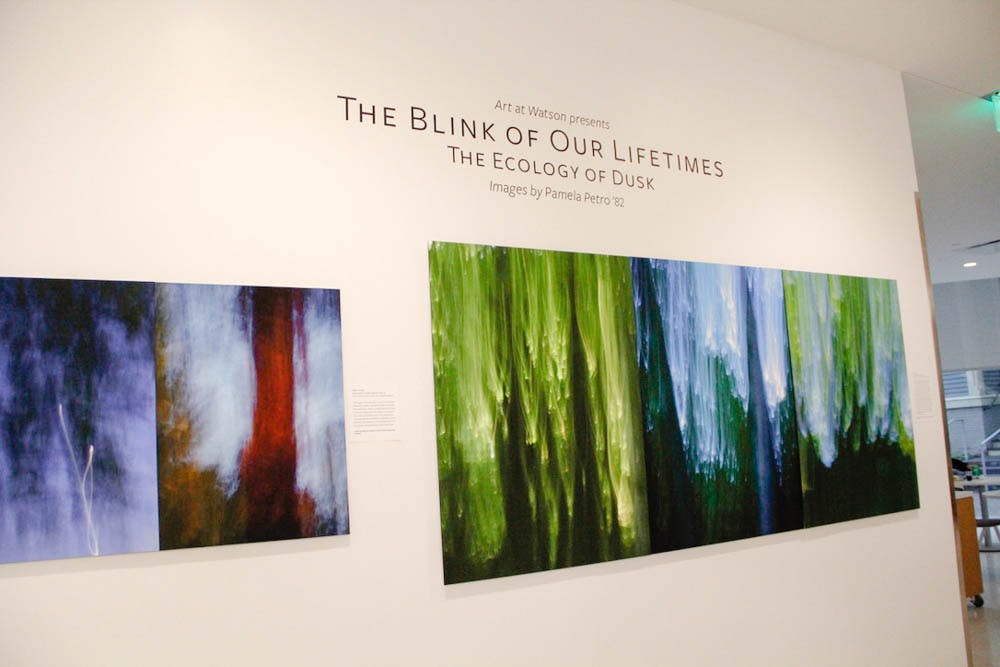A new exhibition of photographs in Stephen Robert ’62 Hall invites viewers to contemplate the interaction between humans and nature through abstract renderings of nature at dusk.
Artist and writer Pamela Petro ’82 opened her exhibit, “The Blink of Our Lifetimes: The Ecology of Dusk,” at the University Oct. 2.
The artist captured her images by deliberately and quickly moving her digital camera up and down so that each picture is out of focus. All set at dusk, the photos display distinct locations including Wales, New England, Oregon, Nova Scotia and the Brazilian Amazon.
“At dusk, the world is partially hidden from us, we have to both project outward and see harder what’s there, but we also have to look inward more than we would during the day,” Petro said.
Petro recounted her inspiration for creating “The Dusk Series,” explaining that the theme of the exhibition relies heavily on the Celtic notion of “dusk,” which is considered a “thin time.” Petro explained the ancient Celts’ conception of thin time, describing “moments when worlds became permeable, when the world of the living overlaps with the world of gods and the dead.” She sees this concept — “where we can hold more than one world view in our mind simultaneously” — as symbolizing empathy.
The exhibition includes 25 discrete photographs clustered in ten groups of two or three photos with accompanying writing. Petro decided to structure her art this way in part because of her experience as a “Writing and Illustration” independent concentrator at the University. She values both photography and writing, and has published books related to travel, photography and language. Petro suggests that the audience appreciate the photos together with the narratives attached to each image group.
“The multiple works titled together created a space for narrative: for description, reflection, summary, exposition,” she said. “The images drew forth and inspired the labels and the narratives condition the way we see the images. They’ve become inseparable.”
Jo-Anne Hart, an adjunct professor of international and public affairs at the Watson Institute for International and Public Affairs, commented on the relevance of Petro’s artwork to the Watson Institute. “It is international,” she said. “These (photos) are from multiple countries and places, but it also is about seeing things from different perspectives.”
Hart emphasized the power of empathy in art to transform humans’ relationship with nature, which she said is especially important given the climate crisis. “When you see and experience how beautiful it is, you learn to care about it,” she said. “This is how artists can bring their works to be social advocates; these are good examples of trying to bring not just attention, but also the visceral connection with the wrongness that is happening.”
The audience at the opening reception responded positively to the exhibition. “It makes me feel inspired. It makes me feel more in touch with nature, and also aware of how much more complicated and layered the world is,” said Sophie Willard Van Sistine, a student at Smith College who assisted Petro with the exhibition.
“Dusk is when students are normally working. I think it’s good to step back and look at it from a different perspective,” said Lauren Choi ’23.
This exhibition, sponsored by Art at Watson, will be on display through the fall semester. Hart noted that there will be other exhibitions that touch on environmental threats sponsored by Art at Watson in the following months. “Art at Watson is very interested in art and activism, and bringing out not just intellectual attention, but also emotional and visceral attention to important issues,” she said.





